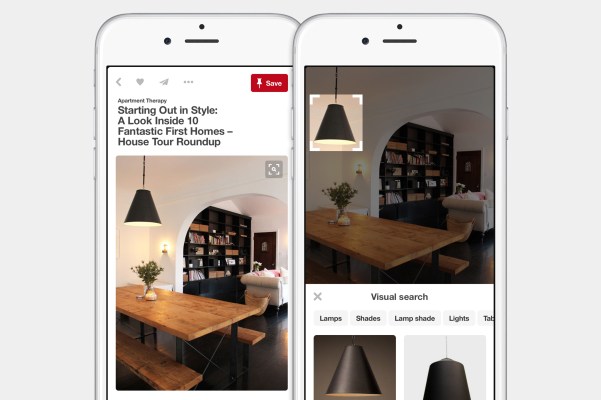Today, Pinterest announced that it has hired its first chief financial officer from Twitter, Todd Morgenfeld. However, there’s a more interesting footnote that’s reported in The Wall Street Journal’s story about the hire: Pinterest generated roughly $100 million in revenue last year, according to the report.
You may recall that last year TechCrunch reported, based on leaked documents we received, that the company was projecting around $169 million in revenue for 2015 (and $2.8 billion by 2018). We reported the story in October last year, and the information was used by Andreessen Horowitz to solicit limited partners to invest in a special investment fund for Pinterest earlier in the year.
So, what’s going on with the discrepancy here?
Facebook’s advertising business continues to chug along at a very healthy rate. We also reported that a leaked deck from Snapchat noted that the company had estimated that revenue would be between $250 million and $350 million for 2016, and could have been as high as $1 billion for 2017. Both of these mobile advertising strategies appear to not only be working, but growing really quickly.
Was Pinterest, in the end, still a little bit of a question mark for marketers? Most of the content that appears on Pinterest comes from businesses, and it possesses a large user base. But it may be that advertisers are still apprehensive about shifting budgets from other services like Facebook — or even emerging ones like Snapchat, which could pique greater curiosity because of their rapid growth and engagement. (Snapchat has around 150 million daily active users.)
Some of these tools exist to some extent on other services like Facebook and Snapchat, but Pinterest at first blush would seem to offer a comprehensive platform for marketers. The company has a plenty large user base — in September last year, the company said it had 100 million active users, and it’s pretty likely that that number has gone up. Pinterest in the same leaked documents also said it was projecting 151 million monthly active users by the end of 2015. But is it enough to woo advertisers and larger marketing budgets?
Pinterest tries to offer a different value proposition for marketers. Brands are able to touch its users at multiple points of their buying cycles. Users can discover products through advertising tools, making them aware of their existence. Marketers can also tap into a user’s intent to potentially purchase through search. And finally, they can also hit them at points where they are ready to finally make a purchase of those products (or download an app, for example).
To be sure, Pinterest has been very methodical about expanding its business, slowly opening up advertising tools to wider and wider audiences over time. It may be that the company put the brakes on certain ad and commerce product releases until it felt like they were ready. Our reporting pointed at the projection coming from earlier in the year from when we published our story.
Perhaps the company may have been a little ambitious in its plans. This isn’t, of course, unheard of. Companies sometimes may offer a wide range of potential projections — such as the case of Snapchat, which the leaked deck shows its 2017 revenue could range from $500 million to $1 billion. Snapchat, too, has slowly been rolling out its plans for working with marketers, meaning that the final numbers that may land may end up partially (or wildly) different from the estimates offered to investors.
New advertising formats are also emerging on Pinterest, but are sometimes coming out quite a bit later than other platforms. In August, the company finally released native video advertising following the release of a native video player. Facebook, meanwhile, has had a robust video ecosystem and is clearly figuring out ways to monetize it.
That’s likely the reason why Pinterest is investing so much in its visual search tools. At an event earlier this year, Pinterest revealed that it would soon give users the ability to search for products through photos taken on your smartphone. One of Pinterest’s perceived edges is its heavy research and development in visual search, and it also recently began expanding those tools into video. Pinterest needs to find an obvious edge that can convince marketers to pull their budgets away from search (Google), Facebook and other advertising platforms.
It’s also expanded very aggressively into international markets. And it’s continuing to release more and more advertising tools. AND it continues to not only acquire companies for talent, but also some additional products like Instapaper. All of this is, of course, feeding into the company’s intent to become the visual search engine of record on the internet.
Then, there’s the case of its commerce plans. The company is trying to offer as many commerce tools as possible for its companies — and potentially to attract influencers — with things like the Buy button and showing products below videos. But buyable pins on Pinterest only came out in June last year, and it’s hard to create new user behavior (much less get people to put in a credit card), and it’s only been a short while since launch, relatively speaking.
The hiring of a CFO can, sometimes, signal ambitious plans to organize an inevitable initial public offering. A Pinterest representative told me over email that the company has “no plans for an IPO right now, as we focus on growing the business.” So Morgenfeld’s task may be to get things in order as it continues to try to woo advertisers and marketers.
We reached out to a Pinterest representative about the discrepancy, who said the company does not comment on revenue.
